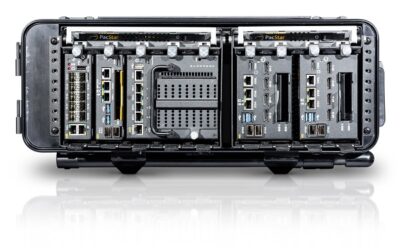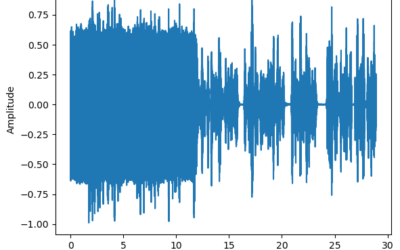German Navy’s Largest Procurement Project Receives Green Light
The German Navy’s (Deutsche Marine) next new-construction programme, initially four examples of the MKS 180 (Mehrzweckkampfschiff 180) multirole combat ship, achieves its next major step. The German Parliament has laid out a €6 billion budget for the procurement of the four ships, representing the largest procurement programme in German Navy history. First delivery is expected to be in 2023. The budget also procures four proven TRS-4D naval radars, based on AESA (Active Electronically Scanned Array) technology, to be supplied by Germany’s HENSOLDT.
A unique process in German Navy history, the Ministry of Defence (MoD) invited international bidders from France, Italy, the Netherlands and Spain (Naval Group, Fincantieri, Damen Group, Navantia) for the construction contract. This European-wide bidding process seems to be politically correct, but questions remain over economic aspects. Among the surviving shipbuilders, Damen Group now works closely with Fr. Lürssen Werft-owned Blohm+Voss in Hamburg, to offer a platform that possesses mission modularity at its best. In a press release dated 14 January 2020, Damen announced that the ships will be built at Blohm+Voss shipyard in Hamburg and at other shipyard locations of Lürssen Group. Damen intends to build in this way in order to spend around 80 percent of the total net investment as added value in Germany. The same applies to the electronic application systems that are supplied by Thales Nederland to its own design. Around 70 percent of the services will be provided by the German subsidiary of Thales and by other German subcontractors, according to Damen Group
The design of the MKS 180 frigate should be capable of meeting all the requirements of three-dimension naval warfare completely. The new surface ship class will facilitate on the Navy’s Long-Term Development Plan (LTDP) for 2020 and beyond, according to which Germany’s naval forces are in transition, with the great bulk of major surface and underwater warfare assets being optimised for ‘open ocean’ or ‘blue water’ operations. Currently, roughly 55 percent of the fleet’s surface combatants are optimised for shallow-water operations, however. This scheme shows how the German Navy is in strong need of new surface assets capable of collaborating with major partners in NATO.
The MKS 180 combatants will be capable of tackling targets above and below water, supporting land missions by using an ultra-modern 127-mm naval gun delivered by the Italian manufacturer Leonardo. It was noted that a fully automatic naval gun system will be the only alternative to fully cope with future threats. The ships’ inventory of short-range and medium-range guided missiles should be capable of engaging airborne targets at a distance of >50km, enabling protection from difficult airborne threats like combat aircraft, missiles and drones.
In comparison to the ongoing delivery of four Type F125 (Baden-Württemberg class) frigates, the MKS 180 multirole combat ship may be fitted with an Anti-Submarine Warfare (ASW) mission module, enabling the ship to function as dedicated “Submarine hunter”.
Additional flexibility may be provided by one embarked helicopter and RHIBs for rapid deployment of boarding parties and Special Operations Forces. The second Type F125 frigate, named FS Nordrhein-Westfalen (F 223), was commissioned into service on 10 June.
As to the MKS 180 programme, the German Navy needs a ship capable of being upgraded with future weapon and sensor systems, enabling operations in the next 30 to 40 years. As a result, the ship’s projected displacement rose from the originally planned 5,500 tonnes to nearly 10,000 tonnes in recent years. The ship’s displacement stood at roughly 9,000 tonnes last May; it is suggested that this figure will be the maximum in accordance to industry. MONCh previously summarized the general features of the MKS 180 ships as follows:
– Length: ~155m
– Displacement: up to 9,000 tonnes
– Cruising speed: 18 knots at Sea State 4
– Range: 4,000nm at 18 knots
– Mission endurance: 24 months
– Tactical endurance: 21 days at sea without re-supply
– Accommodation: 110 including 70 troops
– Aircraft: one medium/large helicopter (maximum 15 tonnes) with long-range anti-ship/land attack-capable missiles; two VTOL UAS
– RHIB component: two RHIBs (same as Type F125 frigates) attaining a top speed of 26 knots
– ASuW suite: one 127mm naval gun; four to eight medium/heavy anti-ship missiles with land attack capability
– Short- and medium-range air defence: vertical-launch RIM-162 Evolved Sea Sparrow Missile (ESSM) and two 21-cell launchers for RAM Block II
– Close defence suite: two MASS decoy launchers; two MLG27 cannons; multiple armoured, NVG-capable weapon stands for manually operated .50-calibre
machine guns and 40mm grenade launchers, snipers and MANPADS/anti-tank guided missile crews
– Mission deck: tactical EW/SIGINT/ASW package; variable depth sonar; minehunting drones; dive chamber for diver support
– Ice class: 1C/E1 for sea areas with ice formation
– Service life at 30 years
Stefan Nitschke
























